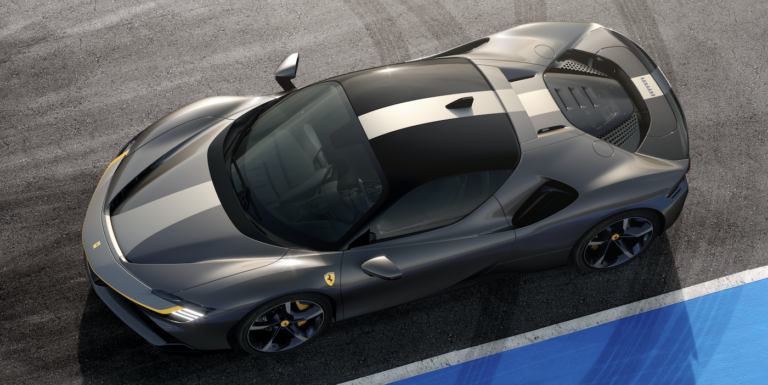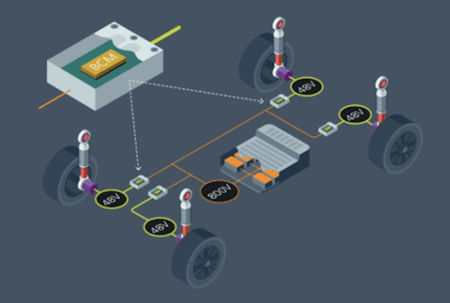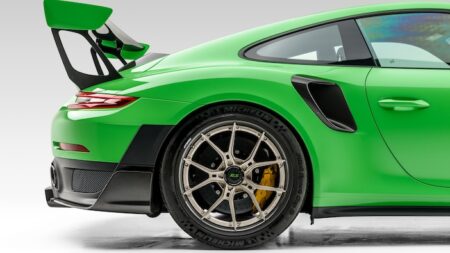The shortlist for the 2020 Vehicle Dynamics International Awards presented some difficult choices for the expert jury, with an impressive line-up of automotive engineering excellence, innovation and talent. After much deliberation, four worthy victors emerged…
Car of the Year
Dynamics theory becomes engineering reality when production vehicles enter the market. So which vehicles launched over the past 12 months most impressed the jury? A broad range of vehicles was considered and assessed, from the Volkswagen Golf Mk8 and Ford Focus ST, to the Land Rover Defender and Audi RS 6 Avant, to the Ferrari SF90 Stradale and Porsche 911.
Winner: Ferrari SF90 Stradale
This year saw a very close-fought battle between Porsche’s 992 and Ferrari’s SF90 Stradale. Ultimately Ferrari won, with a model that is unusual in many ways for the marque, being a V8 rather than the V12 traditionally fitted to its flagship models, as well as being its first series production PHEV – and it also brings in several vehicle dynamics innovations.
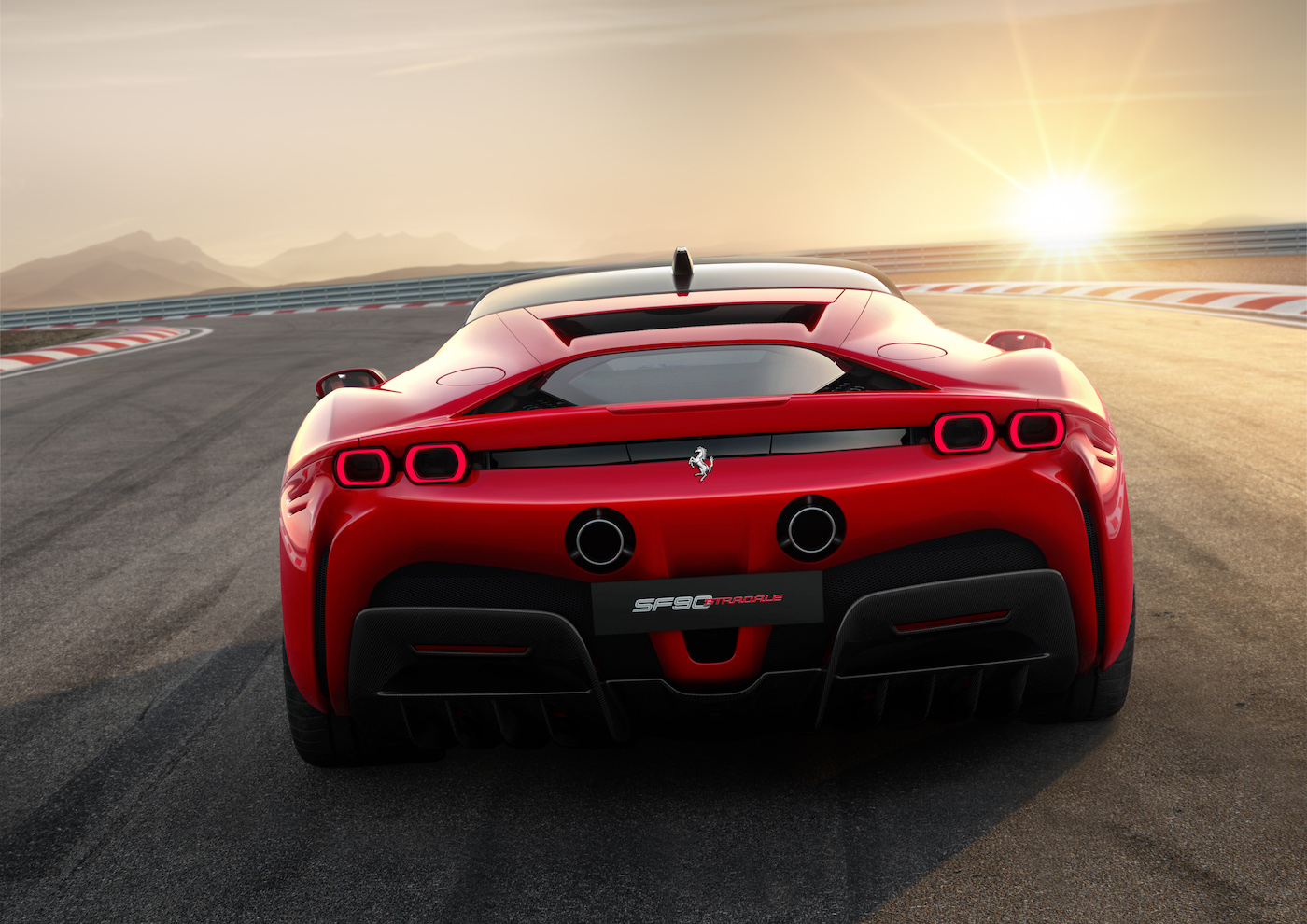
The car is extreme on every level, with headline figures of 1,000cv, a weight-to-power ratio of 1.57kg/cv, and 390kg of downforce at 155mph (250km/h). Ferrari’s engineers have fitted a 4WD system to help drivers exploit the full power of the hybrid powertrain, with the traction enabling yet more impressive figures, of 0-62mph (100km/h) in 2.5 seconds and 0-124mph (200km/h) in 6.7 seconds.
The SF90 Stradale is not just about straight-line power though, so Ferrari’s dynamics engineers have introduced a full-electric front axle, known as the RAC-e (electronic cornering set-up regulator). As well as exclusively providing propulsion in electric drive, the two front motors independently control the torque delivered to the two wheels, for a ‘torque vectoring’ effect. The RAC-e is integrated into the car’s vehicle dynamics controls, and by governing the distribution of torque, the car becomes easier to drive on the limit.
Th ebraking performance is also impressive, with a brake cooling circuit design completely redesigned for the SF90. Ferrari’s engineers collaborated with Brembo to develop a new caliper design for the front brakes, and this is its first application on a road car. The caliper has an integrated aerodynamic appendage, which distributes the highly charged air flow from the air intake to the brake pads and discs more efficiently.
However, all these dynamics features, as well as the 270kg hybrid architecture, create a weight penalty. This weight has been offset by the all-new chassis and bodyshell, built using multi-material technology including carbon fibre, two new aluminium alloys, and the use of hollow castings instead of ribbed castings. The result is an overall vehicle weight of 1,570kg, and the design also brings benefits in terms of rigidity and a lower centre of gravity, with the chassis boasting 20% higher bending stiffness and 40% higher torsional rigidity than previous Ferrari platforms. NVH characteristics have also been improved through the use of a new alloy known as ‘quiet aluminium’ for the floor pan.

The high-voltage system controls (battery, RAC-e, MGUK, inverter), engine and gearbox control, and vehicle dynamics controls (traction, braking, torque vectoring) have been integrated with Ferrari’s existing vehicle control logics, to create what the company has named the eSSC (electronic side slip control) vehicle control system.
The eSSC introduces three dynamic regulation and distribution strategies for sending engine torque to all four wheels: Electric Traction Control (eTC), which optimally manages the availability of the torque and distributes it to the individual wheels to suit driving conditions and grip requirements; brake-by-wire control with ABS/EBD, which allows the braking torque to be split between the hydraulic system and the electric motors to allow regenerative recovery under braking, and torque vectoring.
Michael Leiters, Ferrari’s Chief Technology Officer accepted the award. He stated: “This prestigious recognition attained by the SF90 Stradale confirms the outstanding level of our best-in-class vehicle dynamics solutions aimed at guaranteeing that all drivers can make full use of our cars’ impressive potential. Systems such as the new eSSC and the full-electric front axle (RAC-e) strengthen the already undisputed lead of the Prancing Horse in this area and provide drivers with an unparalleled level of driving emotions. I would like to thank Vehicle Dynamics International on behalf of all our engineers for an award that recognises their constant search for perfection.”
What the jury said:
Franklin Marcus, technical director, Motor Trend, USA: “Adding front-axle torque vectoring to Ferrari’s already amazing eSSC promises to set new benchmarks for dynamic handling”
Tarcisio Dias, Mecânica Online, Brazil: “The evolution of the Ferrari SF90 Stradale with series electrification reveals the importance of dynamic and safety behaviour, especially in terms of braking.”
Gábor Szécsényi, Az Autó and Retro Mobil, Hungary: “The SF90 Stradale is a true showcase of what automotive engineering is capable of today. We could surely send one out to space as an example of the engineering knowledge of humankind.”
Highly commended: Porsche 911 (992) Carrera
Christophe Congrega, test drive and new technology journalist, L’Automobile Magazine, France: “Improved with each new generation, the 911 maintains a perfect balance between pure sporty driving ability and ease of daily use. It is the best compromise for lovers of driving. Worth testing with all the options such PASM, four-wheel steering, and a sports chassis and exhaust system!”
Runners up:
- Land Rover Defender
- Volkswagen Golf Mk8
- Ford Focus ST
- Audi RS 6 Avant
Dynamics Team of the Year
From developing dynamics innovations, to applying them to production vehicles, to good old-fashioned hard work, this category recognises the work of dynamics teams around the world.
Winner: Porsche
The Porsche team has had another productive year, recently launching new versions and variants of the 911, 718, Panamera, Macan and Cayenne, as well as launching the Taycan, the marque’s first fully electric sports car.
The Taycan points the way forward for Porsche, as by 2024 the sports car manufacturer intends to invest around €10 billion in the hybridisation, electrification and digitalisation of its cars, with the Cross Turismo due to be the next ‘green’ model launched, followed by an electric Macan. Around 2,000 new jobs have already been created for the Taycan project.
Porsche is also working on autonomous driving, but given it makes drivers’ cars, there is a difference: artificial intelligence (AI) is being used, to help the vehicles negotiate their way around ports, logistics areas, workshops and car parks in the future. AI requires minimal sensor technology and reduces costs, and the systems are being assessed for series production and further applications.

The team has also introduced not just longitudinal but also lateral dynamics, initially in the Cayenne Turbo S E-Hybrid. The key is Porsche Traction Management (PTM), which adaptively controls the distribution of drive power between the front and rear axles according to the driving situation. Thanks to variably distributable drive power, electric vehicles with separately powered wheels can remain stable, even in critical situations – as long as the torque control reliably detects deviations from the target state and reacts immediately. Porsche Engineering has developed and tested a solution for e-SUVs that does precisely that entirely through a software system, without additional sensors.
Porsche engineers have also been working on weight optimisation, with the latest 911 featuring weight reduction measures through components, joining methods, and side panels made entirely of aluminium.
The team has also developed the Wet Mode assistance system, which can detect significantly wet road conditions and includes a Wet driving programme that can be selected manually to support the driver in bad weather conditions. Acoustic sensors in the front wheel houses detect the amount of spray that has been swirled up and can thus decode the road conditions, helping reduce the risks of aquaplaning.
Runners up:
- Ford
- McLaren
- Lamborghini
Christophe Congrega, test drive and new technology journalist, L’Automobile Magazine, France: “The Lamborghini team is not the biggest team, but they have done a very good job in setting up a good driving facility for all Lambos: cars that were not so easy to drive 10 years ago. Thanks to very good dynamics settings, and the assistance from ALA (active aerodynamics), even the most radical version can be used extremely fast by all driver… or nearly all drivers at least!”
Development Tool of the Year
From simulation to durability assessment, software to lab machinery, the Development Tool of the Year category recognises innovation in creating tools that help vehicle dynamicists achieve automotive excellence.
Winner: AB Dynamics ANVH 250
The low noise levels of EVs have led to drivers demanding improved levels of NVH from the suspension and driveline, which in turn means that vehicle manufacturers need to ascertain NVH issues earlier in the design process and over a greater operating range.
In response to these changing OEM engineering needs, AB Dynamics’ axle-level NVH rig, the ANVH 250, accurately measures the transmission of vibrations up to 250Hz from a vehicle’s wheel hubs, through the suspension springs and dampers, to the suspension mounting points, linkages, anti-roll bars and elastomeric bushes.
The test rig features a stiff frame design that works in combination high-frequency linear actuators, which have been specifically designed for this application. The direct-acting electric linear actuators enable what the company claims is a unique range of frequency, displacement and load, while also being safer to operate than hydraulic systems because there is less stored energy in the system.
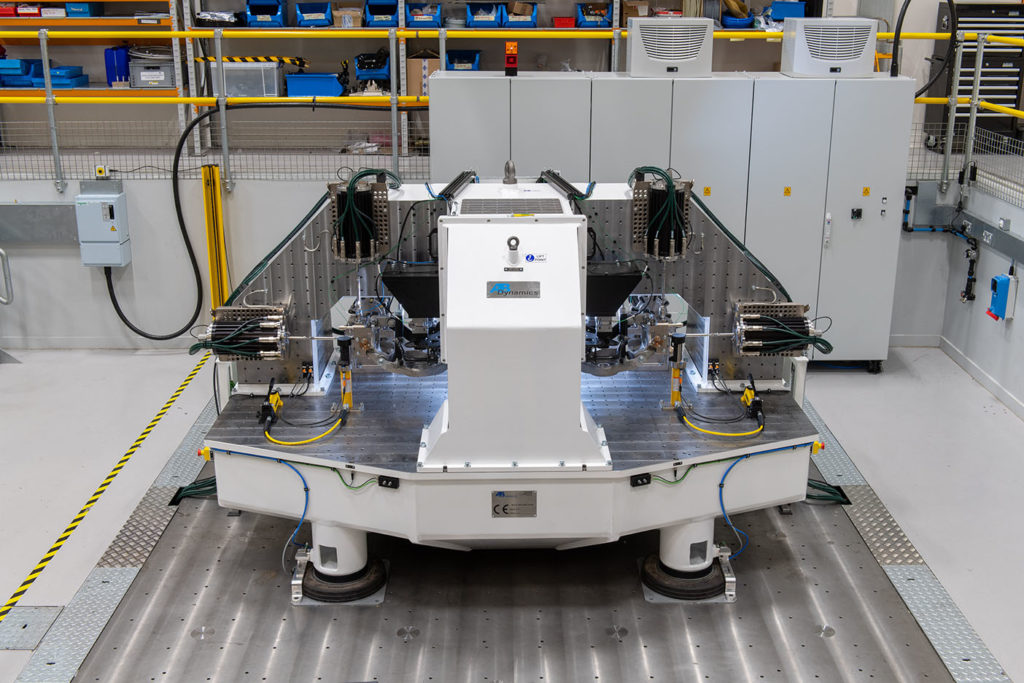
With an axle installed, two sets of three actuators apply precise motion to each hub at frequencies from 0-250Hz and displacements from +/-0.01 to +/-50mm, while tri-axial load cells measure the forces transmitted to each vehicle attachment point. The ANVH 250 can apply a range of sinusoidal, random input and road-load data displacements to the axle system. Displacements can be applied to the wheel hubs in pairs or individually in the vertical (Z), longitudinal (X) or lateral (Y) directions, and the paired displacements at the hubs can be in phase or in anti-phase.
In short, the ability to assess the suspension at the early design stage over such a large frequency range helps avoid expensive NVH fixes at later stages of a vehicle development programme, reducing overall vehicle cost and accelerating product time-to-market.
Runners up:
- Kistler digital transducer interface
- Ansible Motion simulator
- AB Dynamics driving simulator
- MSC Adams-ready VTD
Gabor Szecsenyi from Az Autó and Retro Mobil, Hungary said this about the VTD system: “The fine-tuning of driving aids and their cooperation is essential for autonomous driving in real-world situations, where an overload of incoming information can easily cause danger, and quick reaction times are extremely important.”
Innovation of the Year
Whether hardware or software, engineering or computing, this category recognises innovative ideas that advance and enhance vehicle dynamic setups.
Winner: ZF Flying Carpet
ZF won this category last year with its sMotion fully active damping system, and has successfully defended its title with Flying Carpet 2.0, a predictive chassis concept that brings together the company’s various active and semi-active vehicle motion control systems into one design. As its name suggests, the chassis design is intended to isolate passengers from unpleasant vehicle movements, partly through the use of advanced sensors, a smart control unit, and intelligent actuators to predict and respond to bends, bumps and potholes in the road. The design is intended to lay the groundwork for future automated vehicles.
When passengers in cars today work, read or watch films rather than the road ahead, unwanted car body movements caused by potholes, bumps or bends, or abrupt braking or accelerating, can lead to motion sickness. This is an inconvenience today, but such activity will be far more central to the autonomous car passenger experience, which is where the Flying Carpet 2.0 concept comes in, controlling almost all longitudinal, transverse and vertical movements of the vehicle.
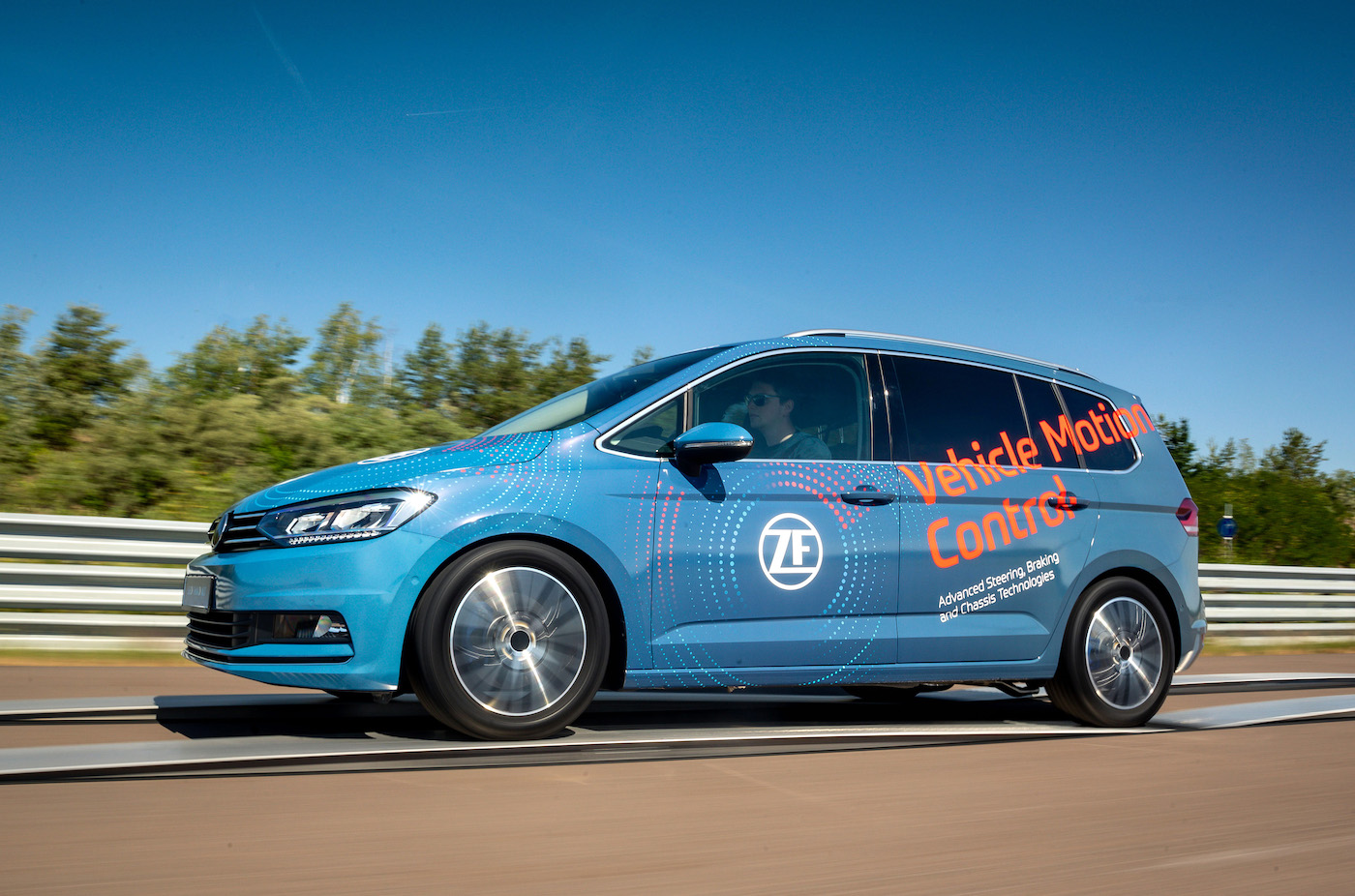
At the heart of the design is the sMotion fully active damping system, which uses four actuators to adapt the suspension movements of each individual wheel according to the driving situation and road surface. The actuators do not just control hydraulic resistance levels to respond to incoming stimuli – they also have a compact, external electric motor and pump unit with integrated electronics that works as a bi-directional actuator. These units can elevate the vehicle wheels upwards together or push them downwards, individually and actively.
For example, when cornering, the two inner wheels can be retracted and the outer wheels extended to help counteract pitching, rolling, and lifting movements.
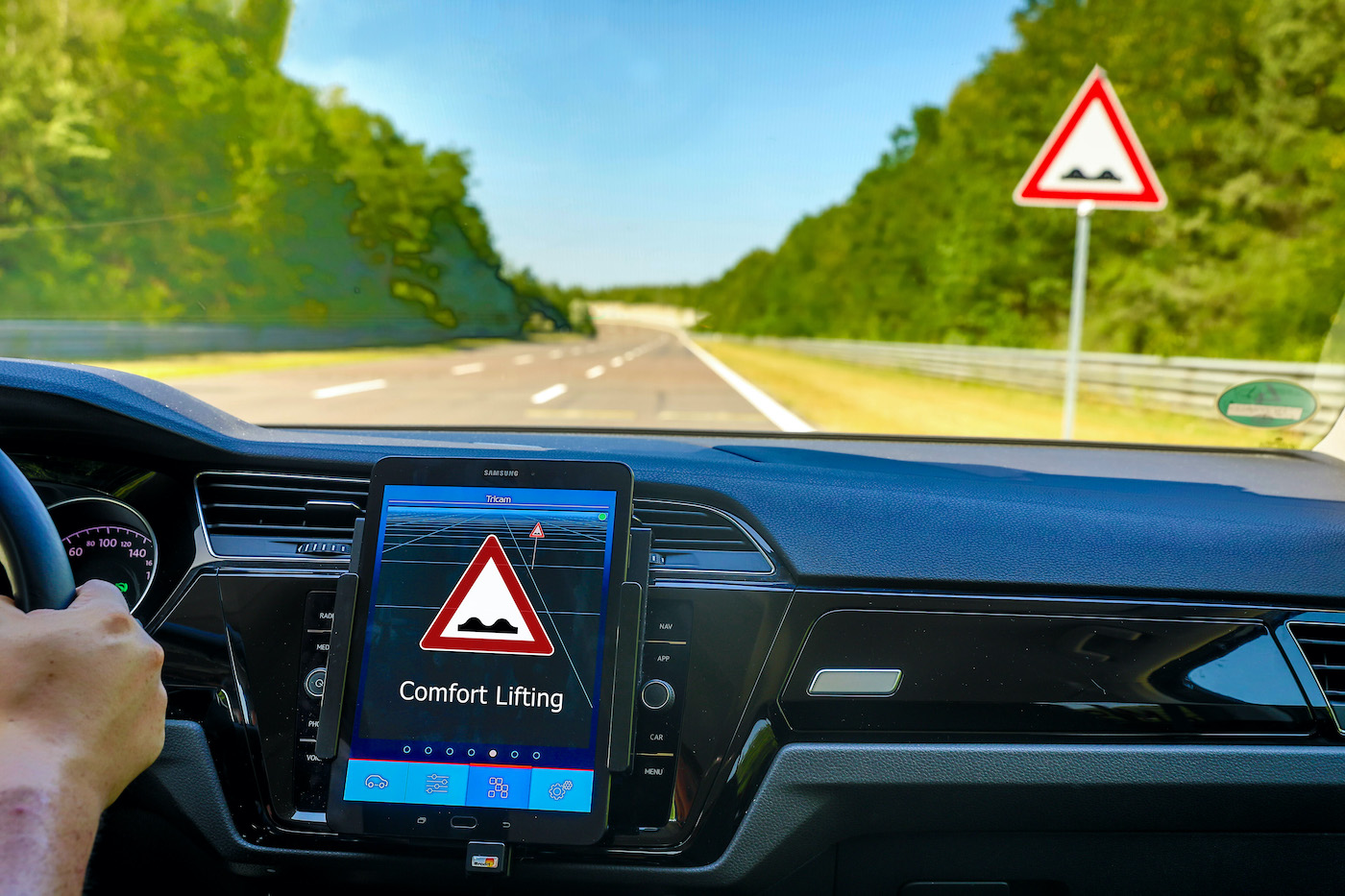
The concept also addresses ride comfort through the AKC (Active Kinematics Control) active rear-axle steering system, designed to enhance safety, dynamics and manoeuvrability. At low vehicle speeds, the system makes it easier to manoeuvre by steering the rear axle in the opposing direction to the front wheels. If the vehicle is moving faster, the system steers the front and rear wheels in the same direction to provide greater directional stability. When used in conjunction with sMotion active damping, AKC can prevent power oversteer on tight bends. Supplemented by ZF’s steer-by-wire power steering system and IBC (Integrated Brake Control) active brake system, the combination of these four integral chassis components can add comfort to most driving situations.
Dr Peter Holdmann, head of the car chassis technology division at ZF accepted the award. He stated: “ZF’s Flying Carpet chassis concept is a combination of active damping, braking and steering systems. It includes a network of cutting-edge sensor systems, smart transmission control, and intelligent actuator engineering, and is able to maintain full control over all movements made by the vehicle. Using this concept, we can provide improved vehicle dynamics, higher safety and driving comfort for occupants. We are delighted to receive the award for Innovation of the Year as it proves that we are shaping the mobility of today and the future.”
Franklin Marcus, technical director at Motor Trend, USA is a fan: “In an autonomous future, active and semi-active technologies such as these, which promise to further refine ride quality, will be of the utmost importance.”
Tarcisio Dias, Mecânica Online, Brazil agreed: “Convenience on the road: with the ‘Flying Carpet 2.0’, ZF has designed a chassis concept capable of controlling virtually all longitudinal, transverse and vertical movements of a vehicle.”
Runners up:
- Bridgestone Enliten tyre
- Hyundai-Kia predictive gearbox
- Continental plastic air spring
- Monroe RideRefine SDD
- University of Waterloo corner modules
Gabor Szecsenyi,Az Autó and Retro Mobil, Hungary: The corner module is electric mobility at its best: light, inexpensive and easy to adapt.”
The jury:
• Choi Joo-sik, Autocar Korea
• Robert Bielecki, Oponeo, Poland
• Christophe Congrega, L’Automobile Magazine, France
• Brian Cowan, freelance, New Zealand
• Carl Cunanan: C!, Philippines
• Padraic Deane, managing editor, Automotive Publications, Ireland
• Tarcisio Dias de Araujo, Mecânica Online, Brazil
• Jim Kenzie, Toronto Star, Canada
• Nikos Kounitis, 4Wheels, Auto Bild Hellas, Greece
• Nicol Louw, Car South Africa
• Marco Marelli, freelance, Italy
• Frank Markus, Motor Trend, USA
• Marc Noordeloos, freelance, USA
• Sergio Oliveira de Melo, El Informador, Mexico
• Tomaz Porekar, Avto Magazin, Slovenia
• Alvaro Sauras Alonso, Autofacil and CAR&Tecno, Spain
• Mohamad Sheta, Al-Masry Al-Youm Newspaper, Auto Arabia, Middle East Auto News Agency
• Gábor Szécsényi, Az Autó and Retro Mobil, Hungary
• Oleg Vasilevsky, Auto Bild, Ukraine
• Adam Gavine, Vehicle Dynamics International, UK
• Hormazd Sorabjee, Autocar India
• Jürgen Zöllter – freelance, Germany


